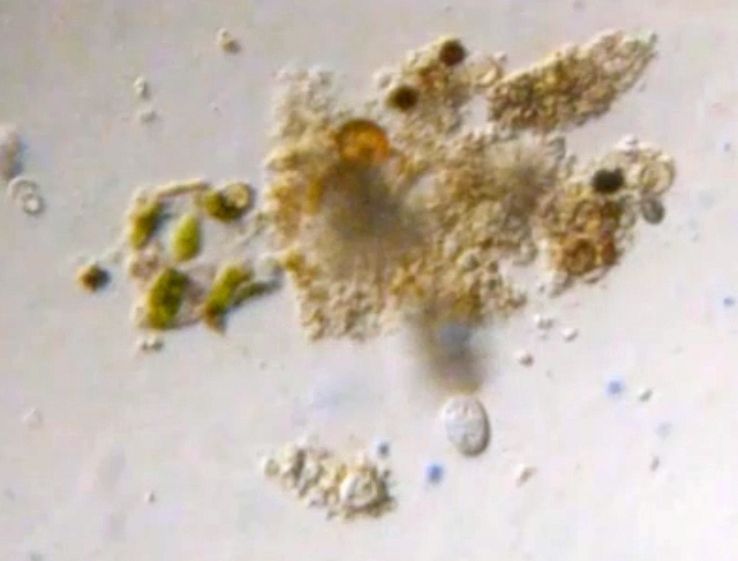Exploring a pond water sample with a DC micronaut- part-2
 Sep 09, 2016 • 10:29 AM UTC
Sep 09, 2016 • 10:29 AM UTC Unknown Location
Unknown Location 140x Magnification
140x Magnification Microorganisms
Microorganisms
laksiyer
Human observer of life. https://sukshmadarshin.wordpress.com
97posts
1255comments
5locations

Sometime back I had posted a series of videos on a Vahlkampfid amoeba . This emerged from a long session I had with DC-Micronaut Reethi while we were exploring various foldscope tricks and also deciding on workshop content. In that session we saw several other gems and I didnt get myself to post them until now. So here they are. I kept the audio on for we had great discussions.
Video 1. Gastrotrich the hairy-backs. A common pond water animal who is a bit shy of light. Gastrotrichs are related to rotifers and have a characteristic shape. Those two projections at the back contain cement glands, one of which puts an adhesive and another that removes it. How fascinating.
Video 1. Gastrotrich the hairy-backs. A common pond water animal who is a bit shy of light. Gastrotrichs are related to rotifers and have a characteristic shape. Those two projections at the back contain cement glands, one of which puts an adhesive and another that removes it. How fascinating.
Video 2. Halteria . A ciliate that shows saltatory/jerky motion.
Video 3. A mystery flagellate (Flagellate-18568-3-LI). Quite flat and showing a characteristic spiral motion. Any help in identification will be appreciated.
Video 4. A large slow moving ciliate (Ciliate-18568-4-LI). I thought this was a Blepharisma, but am not sure as Blepharisma has a red pigment.
Video 5. My favorite field though is this one with a Ciliate (Ciliate-18568-5-LI) amidst flagellates, chlorophytes and bacteria. I think this is when we got better at dark field and angular illumination.
Video 6. This is a flagellate (Flagellate-18568-6-LI) that has an interesting cork-screw motion. It has a depression at its anterior end. It also jiggles.
The session ended with staring at these amoeba-like organisms all over the field, but they weren’t moving… a little more patience and when all was quiet, the amoebae came out and how they did (click here to read). An excerpt below.
Sign in to commentNobody has commented yet... Share your thoughts with the author and start the discussion!

 0 Applause
0 Applause 0 Comments
0 Comments_300x300.jpeg)

















